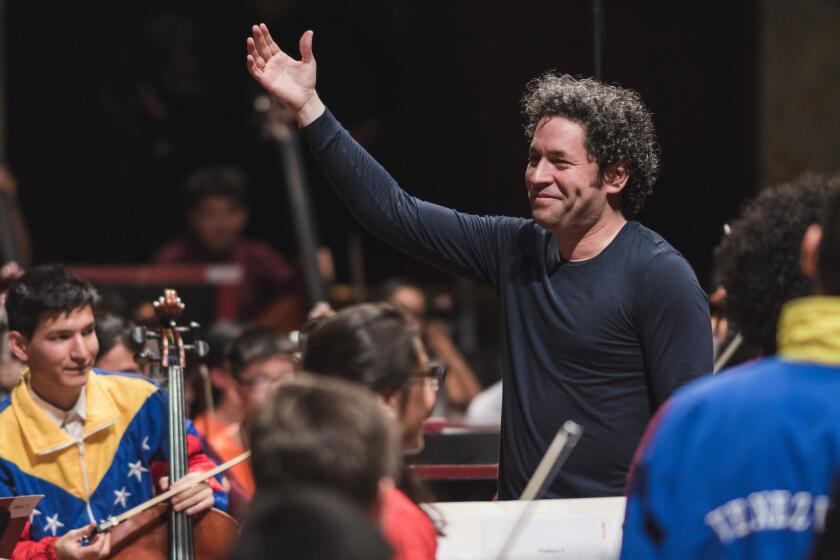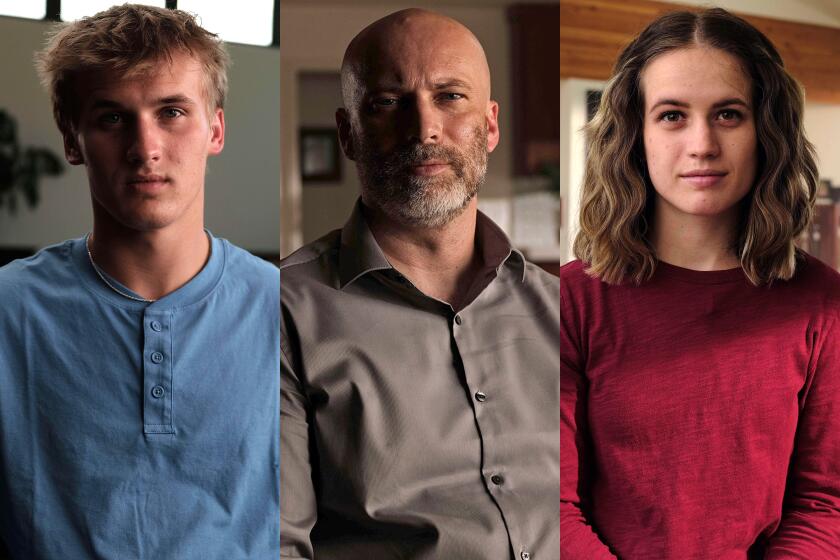U.S. Pavilion at Expo ’92 a Victim of Federal Budget Cut : Design: L.A. architect is ‘appalled’ that the nation won’t be at Spain’s fair marking America’s discovery.
- Share via
Expo ‘92, the major world’s fair planned for Seville, Spain, will celebrate the 500th anniversary of Columbus’ discovery of America--and it looks like the United States of America will not be represented.
Money for the $30-million Seville U.S. pavilion, designed by a Los Angeles team led by architects Barton Myers Associates, has been cut from the federal budget. The bill that created funding for the pavilion was eliminated from the 1990 federal appropriations measure recently passed by both houses of Congress and signed into law by President Bush.
The pavilion’s funding is a victim of the struggle to balance the federal budget. Rep. Neil Smith (D-Iowa), chairman of a House subcommittee that oversees the U.S. Information Agency, declared that Seville “is a low priority for taxpayers’ money at a time when lawmakers are trying to reduce the deficit.”
Architect Barton Myers said he is “frankly appalled” at the government’s failure to fund the project. Myers’ design, which won a national architectural competition and has been widely praised by critics across the country, has now missed the ground-breaking deadline set for this spring on the Expo ’92 site, an island in the Guadalquivir River.
“I deeply regret that the U.S., alone among the world’s major nations, may well fail to be represented at Seville, in a fair that highlights the Age of Discovery,” Myers said. “This is despite the fact that President Reagan wrote personally to King Juan Carlos promising that the U.S. would most certainly be present in 1992.”
About 110 countries have committed to build pavilions at the fair site. Among the nations that will not be represented are South Africa, Albania, Iraq, Syria and North Korea.
Myers’ design for the Seville U.S. pavilion imaginatively develops the fair’s theme of discovery. Passing through an entry under a wall of water, visitors cross a bridge over an “ocean,” which symbolizes Columbus’ voyages to the New World. Inside the pavilion three high-tech, sun-tracking “shade sails” invoke images of Columbus’ vessels: the Nina, the Pinta and the Santa Maria.
Fifty pylons, representing the states, double as cooling towers that draw hot, dry air through a layer of moistened pads. This energy-saving device avoids the need for air conditioning in the Andalusian summer and demonstrates American ingenuity.
If the pavilion is to be built after all, it will either require a special federal appropriation or its backers will have to seek private-sector funding, Myers said. Even if the private sector can be persuaded to fund the pavilion, whose construction would have to be rushed, Myers questioned whether the United States should be represented at this major international fair by private interests rather than a government agency.
USIA officials in Washington declined to comment on the pavilion situation. Agency spokesman Frank Johnson said it is “hopeful” that funding will be found in time for a fall start on construction.
Peter L. Spurney, a Washington fair-management specialist involved with Expo ‘92, said, “Seville will reflect what’s going on in Europe in 1992. Like it or not, it’s going to be the place to be.”
But not, it seems, for the United States. As Heller remarked, “the U.S. effort in Seville is so far dead in the water.”
More to Read
The biggest entertainment stories
Get our big stories about Hollywood, film, television, music, arts, culture and more right in your inbox as soon as they publish.
You may occasionally receive promotional content from the Los Angeles Times.









